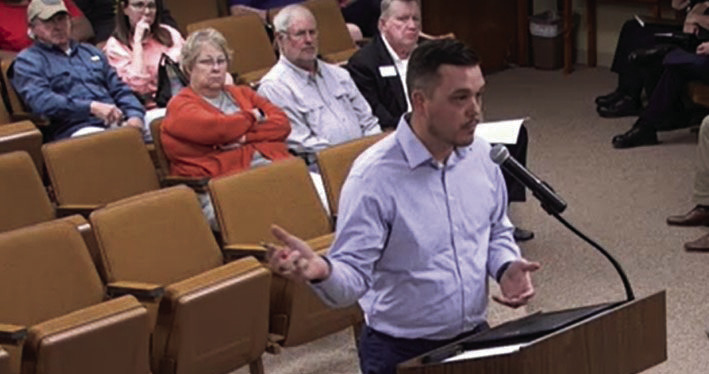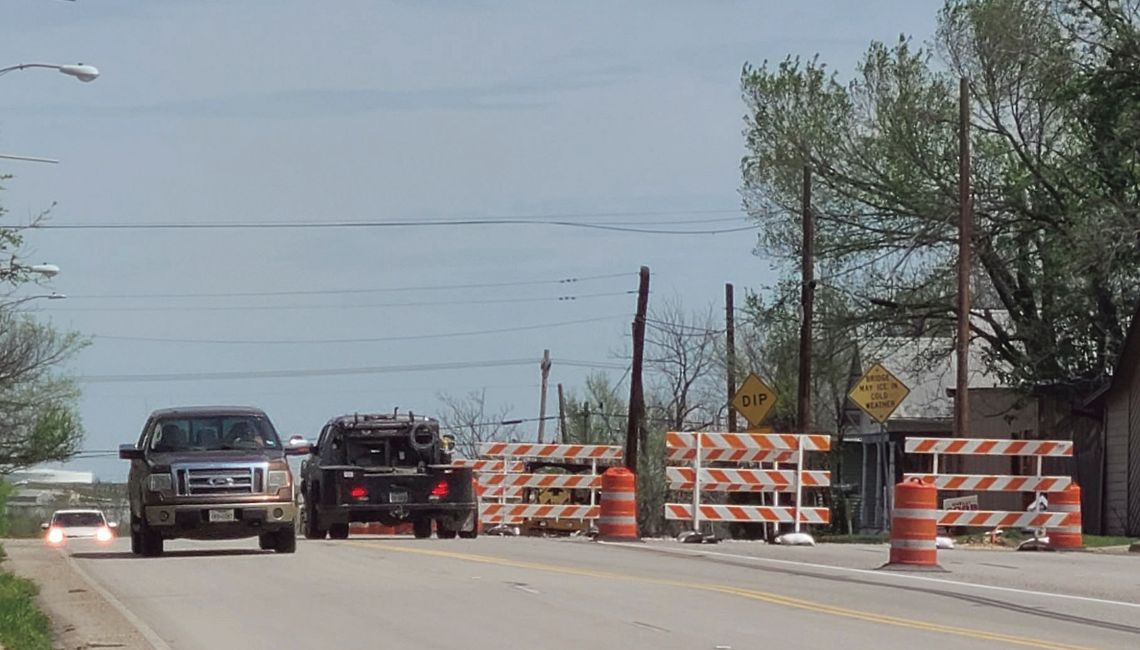Taylor residents raised a ruckus over the restriping of Mallard Lane to include bike lanes, and their voices have been heard. The Taylor City Council has asked to have an agenda item on an upcoming meeting to discuss options and solutions.
“We really screwed up on Mallard Lane. I’m getting a lot of complaints about that,” Councilman Mitch Drummond said at the March 14 council meeting.
Drummond, an avid bicycle enthusiast, believes bike lanes are important, but also that they must be applied with functionality in mind.
“I want to be clear that I support bike lanes and other efforts to promote safety and calm traffic on our streets. However, we must be sensitive to how those measures impact the people who live and work along the streets where they are installed. That’s why I’ve asked to remove the physical barriers in front of the homes on Mallard Lane and re-examine how future bike lanes are built,” the councilman said in a statement to the Taylor Press.
Mallard Lane was part of the city’s road maintenance plan for 2024, along with Fourth Street and Second Street. These three roads were budgeted to have repairs and to have bike lanes added. While the bike lanes are part of the city’s multi-modal transportation plan, the real reason for adding the lanes at this point is to slow down traffic on these major streets, according to city leaders.
“Bike lanes not only provide a designated space for cyclists, reducing the likelihood of collisions with motor vehicles, but also serve as effective traffic calming measures, encouraging drivers to proceed with caution and reduce their speeds. The bike lane on Mallard also provides a buffer between fast moving vehicles and our school children,” Councilman Robert Garcia wrote in a letter to constituents posted on his social media page.
Mayor Brandt Rydell said the traffic problem on Mallard has long been in need of a solution.
“Two of the complaints I got about Mallard as I would walked and knocked doors during my campaigning days were that people speed on Mallard all the time and … there’s a lot of heavy truck traffic cutting through, not necessarily making deliveries. So as we squeeze down Mallard a little bit we don’t have that problem. People aren’t speeding, you’re not seeing that level of truck activity,” the mayor said.
Traffic may be calmer, but residents are outraged. The bicycle lanes were created in a way that limits normal usage of the road. Delivery drivers, garbage trucks and mail carriers are having to stop in the driving lane rather than pull off to the side. Traffic is often blocked, causing frequent delays and stoppages.
The hefty price tag for Mallard Lane repairs also raised some eyebrows. Mallard seemed to be in better shape than many Taylor streets, so the decision to invest in it rather than other streets caused questions among constituents.
At last week’s council meeting, Jacob Walker of HDR Engineering said that Mallard, Second and Fourth streets were all chosen because while they are not failed streets, they were on the brink of worsening and making improvements now would keep them from failing imminently.
“Those three streets were selected to maintain because it costs about $4-4.5 million a mile to reconstruct a street. This was $4 million for about four miles of maintenance,” he told council.
While the bike lane being added to Fourth Street has also had detractors, the issue is dampened because it is not affecting residences and their need for services.
“The inclusion of traffic calming measures coming into our downtown area is essential to slow down vehicles, particularly as they approach up a hill and in areas with high pedestrian activity. We have a church and two parks on Fourth street in our downtown,” Garcia said.
Several councilmen said semi-trucks are a problem in town when they are cutting through rather than making actual deliveries, and expressed hopes that the calming measures would also deter some of the truck traffic.
Heavy truck traffic hastens road wear and having a bike lane on roads where big trucks roam adds a layer of safety to riders as well as pedestrians.
“We don’t want trucks downtown. Unless they’re making deliveries inside Taylor they have no business coming through there. We have enough traffic,” Drummond said. “It’s hard to share [the road]. It’s going to be difficult to figure out a way to do bike lanes in a neighborhood with homes. We have to find some way we could live with this.”










